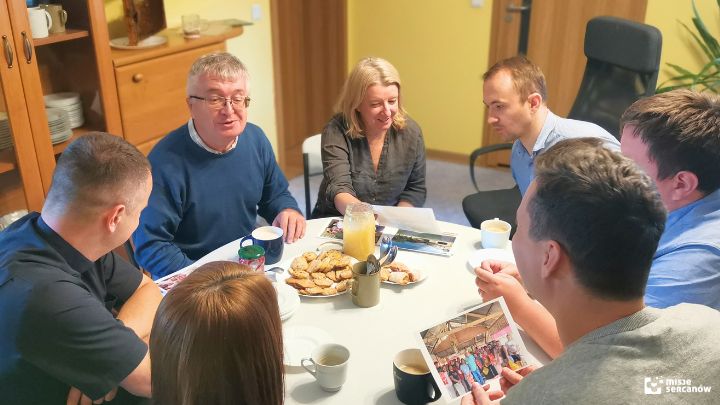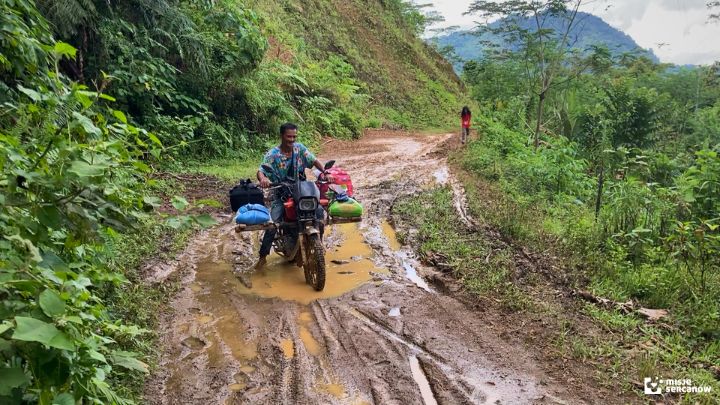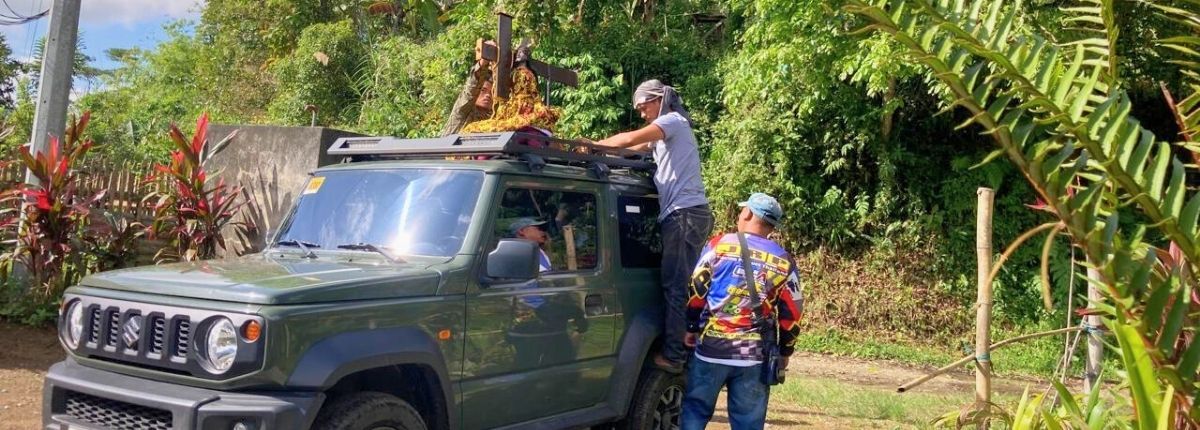"With hope, we bring Christ to the ends of the earth" – the motto of this year's National St. Christopher Week accompanies every missionary on their missionary journeys, not just for this one week of the year. While these words may have a metaphorical meaning for us, for those who literally proclaim the Gospel to the ends of the earth, they are a daily reality and the ordinary prosaic reality of life.
Summer vacations are a special time for our Secretariat for Foreign Missions, as we have the opportunity to host missionaries who are on leave in Poland. We look forward to these moments and try to make the most of them. Recently, our Lublin office was visited by a Dehonian missionary, Father Janusz Burzawa, who has been serving in the Philippines for over 30 years. We know this priest very well - he is the one who coordinates the project for children's nutrition and education in the Philippines.

When we sat down with Father Janusz for the traditional “coffee and cake,” the missionary stories flowed endlessly! On the one hand, we had many questions: What’s happening at his mission? Was the renovation of the parish house in Dansolihon completed? How did he spend this year’s Easter? Isn’t he freezing in Poland? What goals does he have now? On the other hand, Father Janusz has a remarkable gift for storytelling. Armed with printed photos, he transported us - right from his first words - to the island of Mindanao.
Interestingly, the meeting took place just a few days before the start of the 26th National St. Christopher’s Week. During this time, the faithful pray for the safety of missionaries on the road and financially support the purchase of essential means of transportation. It is a beautiful tradition of the Church in Poland to remember about these “down-to-earth” aspects of mission work precisely during the liturgical commemoration of St. Christopher, the patron saint of drivers.
At our Secretariat for Foreign Missions, we have been running a project called “Means of Transportation for Missionaries” for several years now. The name is no coincidence - it’s not only about cars, which are probably the first thing that comes to mind. We were reminded of this once again as we listened to Father Janusz describe the challenges he faces on the missionary roads of his parish in Dansolihon.
-1753348296.jpg)
The parish is very large and located in difficult, mountainous terrain. It includes as many as 37 villages. The main parish church in Dansolihon is a beautiful brick building, which - especially on Sundays and feast days - is attended by those who live nearby or have reliable transportation. The situation is much more difficult for those living in remote areas, who are immobile or unable to get to Sunday Mass. This is where the need for true missionary service arises. It is the missionary who gets into a vehicle - or, in Father Janusz’s case, more often onto a motorcycle - and sets off with the sacraments to reach the faithful.
Many villages have mission chapels where the faithful gather and await the priest on designated days. Father Janusz is fortunate to be assisted by a vicar - Father Kris, a Filipino - and by catechists who serve in the chapels within the limits allowed by Church regulations: they teach catechism, prepare people for the sacraments, and distribute Holy Communion.
But let’s return to the topic of transportation. Several of the photos brought by Father Janusz showed the harsh reality of travel in the mountainous regions of his parish. Not all roads are paved or properly secured. Especially after rain, the clay roads become something between an ice rink and a swamp (if at all possible). Potholes, landslides, and deep ruts appear, and at times, water reaches engine level. In such conditions, a motorcycle is often the only viable option. Father Janusz admitted that he recently lost control and flipped his bike on the road. Fortunately, he escaped with only minor bruises.

As he explained, on these roads, you have to ride with your whole body - the driver must constantly balance, as going “straight” is often impossible. Uphill, the wheel needs support, so you constantly maneuver the handlebars sideways. Going downhill is a whole different challenge - just as difficult, if not harder. After several hours of riding, the entire body is in pain.
Then there are the so-called “surprises”: landslides blocking the road, falling rocks, or sudden downpours that can transform the landscape in minutes.
But getting to mission stations or bringing the sacraments to the sick are not the only times when transportation becomes a tool of evangelization. During Lent, Father Janusz had a creative idea: since not everyone could attend Stations of the Cross in church, a statue of Jesus Nazareno (Jesús Nazareno) was mounted on the roof of an off-road vehicle, which then traveled through the villages and roads of the Dansolihon parish.
-1753348949.jpg)
It’s worth pausing to mention this statue of the “Black Jesus,” which is deeply venerated in the Philippines. The statue of the suffering Christ carrying the cross arrived from Mexico (since, during colonial times, the Philippines was under Mexican dioceses). Legend has it that the statue came by ship. But why is His face dark?
“Some say it’s from seawater the statue might have fallen into, which darkened the wood,” says Father Janusz. “Others claim a fire broke out on the ship and the smoke darkened Jesus’ face. Either way, it doesn’t really matter. What matters is that Filipinos identify with this Jesus. Although they naturally have light brown skin, those who work outdoors - on farms or construction sites - become much darker under the scorching sun. These simple people see themselves in Jesus the Nazarene with dark skin. In our region, if you see someone with a darker complexion, you know they’re someone from the mountains - not someone working in an office.”
The Feast of Jesús Nazareno is celebrated in the Philippines on January 9. “Up to four million people may gather in Manila for the feast,” says the missionary. “But this surprises no one. The suffering Jesus who bears the cross and stumbles under its weight is a mirror of their lives. They too carry the weight of daily struggles. And the fact that Jesus has dark skin shows Filipinos that their appearance isn’t the result of beach leisure - but a symbol of hard work and perseverance.”
Father Janusz’s parish is dedicated to none other than Jesus the Nazarene.
-1753349481.jpg)
On the day of the liturgical commemoration of St. Christopher, the patron saint of drivers, we pray especially for our missionaries - that they may bring Christ safely and with hope to the ends of the earth and beyond!
We also encourage you to support our “Means of Transportation for Missionaries” project - so that cars, motorcycles, bicycles, or boats may become true tools of evangelization!



